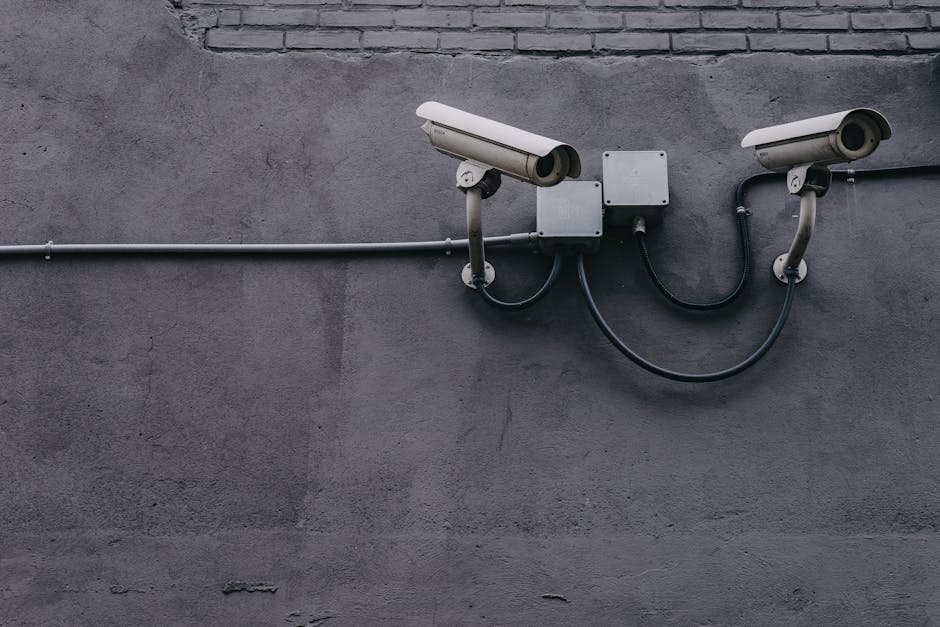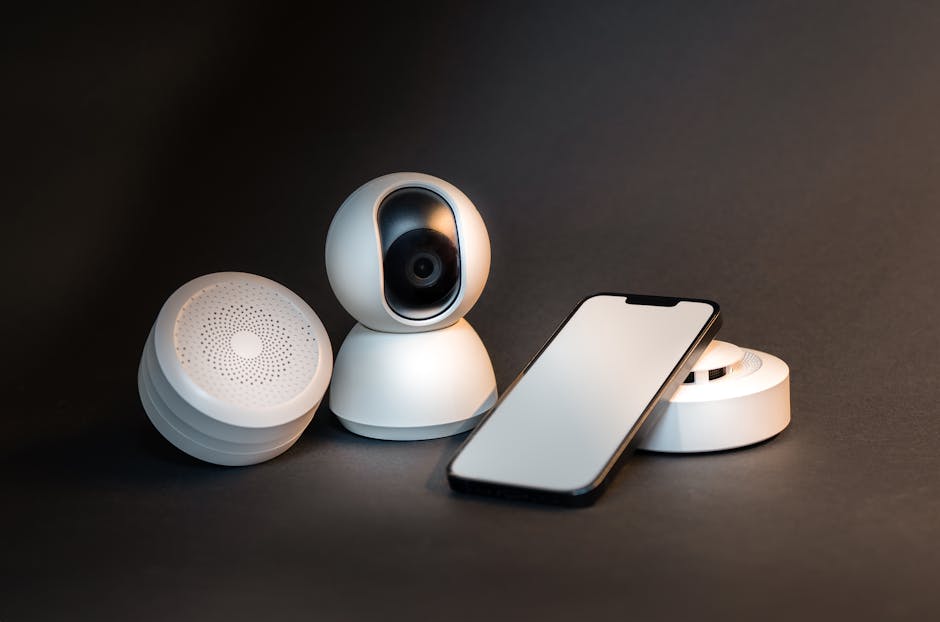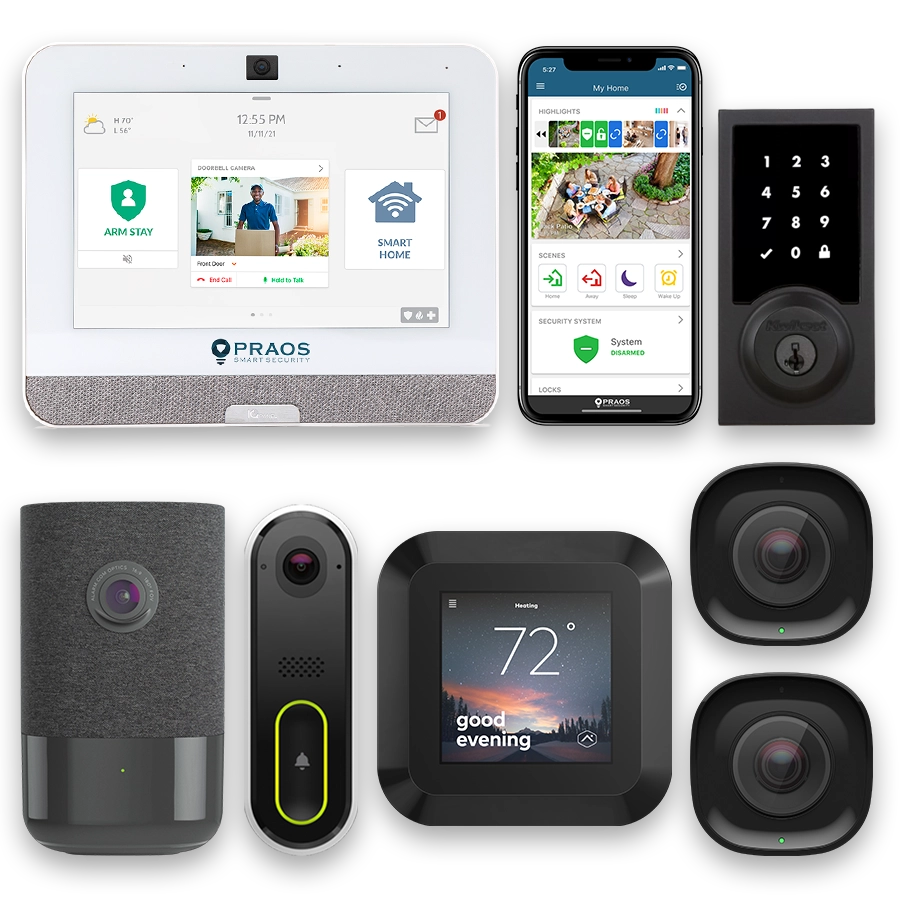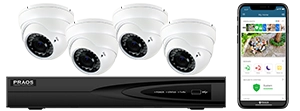- Introduction to Smart Home Security Systems
- Smart Locks and Access Controls
- Surveillance Cameras and Monitoring Solutions
- Environmental Sensors and Detection Devices
- Smart Lighting and Automated Illumination
- Integration with Digital Assistants and Home Automation Platforms
- Future Trends and Innovations in Smart Home Security
Introduction to Smart Home Security Systems
Smart home security systems have emerged as a critical component in modern household management, providing comprehensive protection and convenience. With advancements in technology, these systems have become more sophisticated, offering a wide range of functionalities that enhance the safety and security of homes.
The core of a smart home security system typically includes various interconnected devices that work together to monitor and protect different aspects of the home. These devices can be controlled and monitored remotely via smartphones, tablets, or computers, giving homeowners the peace of mind that their property is secure even when they are not physically present.
One of the primary advantages of smart home security systems is their ability to integrate with other smart home devices. This integration enables seamless automation and synchronization, which can deter potential intruders and respond quickly to any security breaches. For instance, smart lights can be programmed to turn on automatically when motion is detected by security cameras, simulating occupant presence and potentially scaring off intruders.
Additionally, many smart home security systems feature advanced alert systems that immediately notify homeowners of any unusual activity. These alerts can be customized to include real-time video feeds, audio warnings, or direct notifications to law enforcement agencies. This rapid communication is crucial in preventing or mitigating damages caused by break-ins or other emergencies.
Reliability and ease of use are also key factors contributing to the growing popularity of smart home security systems. Many modern systems are designed to be user-friendly, with intuitive interfaces and simple installation processes. This accessibility makes it easier for a broader range of people to enhance their home security without needing extensive technical knowledge.
Furthermore, smart home security systems often come with a variety of features that extend beyond traditional security measures. These can include environmental monitoring for hazards such as smoke, carbon monoxide, and water leaks. By encompassing a broader spectrum of safety concerns, these systems provide a more holistic approach to home protection.
In an era where technology continues to evolve rapidly, smart home security systems represent a significant leap forward in ensuring that homes remain safe, secure, and cleverly managed. By understanding the capabilities and benefits of these systems, homeowners can make informed decisions to protect their property and loved ones effectively.
Smart Locks and Access Controls
Smart locks and access controls have become crucial components in modern smart home security systems. These devices are designed to enhance the security of entry points while offering convenience through advanced access methods such as smartphone controls, biometric recognition, and virtual keys.
Smart Locks are electromechanical locks that can be locked and unlocked using a wireless protocol and a cryptographic key. The advanced features of smart locks include:
- Remote Control: Users can lock and unlock their doors from anywhere via a smartphone application.
- Guest Access: Temporary or permanent digital keys can be shared with guests, family members, or service providers.
- Activity Logs: Detailed logs of who entered and exited the home, enhancing security and awareness.
- Integration: Compatibility with other smart home devices, allowing for comprehensive home automation scenarios.
Examples of popular smart locks include the August Smart Lock Pro, which offers easy installation, and the Schlage Encode, known for its built-in Wi-Fi and robust security features.
| Smart Lock | Key Feature |
|---|---|
| August Smart Lock Pro | Easy installation and advanced connectivity |
| Schlage Encode | Built-in Wi-Fi and robust security |
Access Controls include devices and systems that manage the accessibility of restricted areas. These controls can range from stand-alone devices to integrated systems with other security components. Common types of access controls are:
- Biometric Readers: Use fingerprints, facial recognition, or retina scans to allow access.
- Keypad Entry Systems: Require a specific code to unlock the door.
- RFID Card Readers: Unlock doors through radio-frequency identification cards or fobs.
Integration of smart locks and access controls into a home security system can provide enhanced security, streamline access management, and allow seamless operation with other smart devices, creating a secure and automated environment.
Surveillance Cameras and Monitoring Solutions
Surveillance cameras and monitoring solutions are pivotal components of any comprehensive smart home security system. Their primary function is to provide continuous visual oversight, deterrence, and event recording. Technological advancements have significantly improved the functionality, accessibility, and sophistication of these devices.
Types of Surveillance Cameras
There are various types of surveillance cameras designed to meet diverse needs and environments:
- Indoor Cameras: These are typically smaller and less weatherproof than outdoor cameras. They boast features like motion detection, night vision, and two-way audio.
- Outdoor Cameras: Built to withstand, weather conditions, these cameras often come with waterproof casings, high resolution, and advanced night vision capabilities.
- Doorbell Cameras: Integrated with your doorbell system, these cameras provide a direct feed of your front porch activities. Many are equipped with intercom functionalities and motion detection.
- PTZ Cameras: Pan-Tilt-Zoom cameras offer comprehensive coverage as they can be remotely adjusted to cover wide areas. These are typically used for larger properties or specific surveillance needs.
Key Features and Considerations
When selecting surveillance cameras, several core features should be evaluated:
- Resolution: High-definition surveillance cameras (1080p or higher) provide clearer images and are crucial for recognizing faces and license plates.
- Field of View: A wider field of view can cover more area, reducing the number of cameras needed.
- Night Vision: Infrared or LED night vision capabilities are essential for monitoring low-light conditions effectively.
- Connectivity: Wi-Fi enabled cameras offer flexible installation but depend on a reliable internet connection. Wired options generally provide more stable and uninterrupted feeds.
- Storage: Options range from cloud storage to local storage on SD cards or network-attached storage (NAS) devices. Each method has its advantages concerning accessibility, cost, and data security.
Monitoring Solutions
The effectiveness of surveillance cameras is significantly enhanced when integrated into robust monitoring solutions:
- Real-time Alerts: Many systems allow for real-time alerts via smartphone apps, enabling immediate response to any detected activity.
- Professional Monitoring: Third-party monitoring services can provide 24/7 oversight, promptly contacting emergency services if necessary.
- Integration with Other Devices: Surveillance cameras that integrate with other security devices and platforms (like smart locks, lighting, and digital assistants) create a cohesive security ecosystem.
Privacy and Security
As with any internet-connected device, surveillance cameras can be susceptible to privacy concerns and security vulnerabilities. To mitigate these risks:
- Encryption: Ensure that the video feed and stored data are encrypted to prevent unauthorized access.
- Firmware Updates: Regularly update the firmware to patch any security vulnerabilities.
- Strong Passwords: Use strong, unique passwords and change them periodically.
In conclusion, surveillance cameras and monitoring solutions are indispensable in creating a secure smart home environment. By understanding their types, key features, and the importance of robust monitoring, one can make an informed decision to optimize home security.
Environmental Sensors and Detection Devices
Environmental sensors and detection devices are crucial in enhancing the security of your smart home system. These sensors provide real-time monitoring and alerts for various environmental factors, helping you to prevent damage and ensuring the safety of your household.
One of the essential types of environmental sensors is the smoke and carbon monoxide (CO) detector. These devices detect the presence of smoke and CO, both of which can pose serious risks to health and property. The National Fire Protection Association (NFPA) recommends having smoke alarms in every bedroom, outside each sleeping area, and on every level of the home, including the basement.
- Nest Protect: This device not only detects smoke and CO but also provides voice alerts and integrates with other smart home devices. It uses a split-spectrum sensor, which helps detect both fast and slow-burning fires.
- First Alert Onelink Safe & Sound: This device doubles as a smoke and CO detector as well as an Alexa-enabled smart speaker. It offers voice and mobile notifications and works with both Apple HomeKit and Amazon Alexa.
Another important sensor is the water leak sensor. These sensors help in detecting water leaks or flooding, allowing you to address the issue before it causes significant damage. According to the Insurance Information Institute, water damage, one of the most common causes of home insurance claims, can cost thousands of dollars in repairs.
- Fibaro Flood Sensor: With its small size and versatility, this sensor can be placed anywhere water leaks might occur. It offers audio and visual alerts and is compatible with Z-Wave smart home systems.
- Samsung SmartThings Water Leak Sensor: This device integrates seamlessly with SmartThings hubs and provides immediate alerts to your phone when water is detected.
Environmental sensors also include temperature and humidity sensors, which monitor the indoor climate. These sensors can help in maintaining optimal conditions for comfort and can be particularly useful in protecting sensitive equipment or art collections from extreme environmental conditions.
- Honeywell T9 Smart Thermostat with Room Smart Sensors: These sensors work together to monitor and control the temperature and humidity throughout your home, ensuring consistent comfort.
- Govee Wi-Fi Temperature Humidity Monitor: This sensor offers real-time data and alerts via an app, making it easy to track and manage conditions in critical areas of your home.
Here’s a summary of some key environmental sensors and their features:
| Sensor | Key Features |
|---|---|
| Nest Protect | Smoke and CO detection, voice alerts, smart home integration |
| First Alert Onelink Safe & Sound | Smoke and CO detection, Alexa smart speaker, mobile notifications |
| Fibaro Flood Sensor | Water leak detection, audio/visual alerts, Z-Wave compatible |
| Samsung SmartThings Water Leak Sensor | Water leak detection, real-time alerts, SmartThings hub integration |
| Honeywell T9 with Room Smart Sensors | Temperature and humidity monitoring, smart thermostat integration |
| Govee Wi-Fi Temperature Humidity Monitor | Real-time data, app alerts, environmental monitoring |
Incorporating these environmental sensors and detection devices into your smart home security system can significantly enhance your overall safety and help prevent damage to your property. By actively monitoring various environmental factors, you can stay informed and take quick action to address any potential issues.
Smart Lighting and Automated Illumination
Smart lighting and automated illumination play a critical role in enhancing the security of smart homes. These systems not only improve the overall ambiance and energy efficiency of a home but also serve as an effective deterrent against potential intruders. Modern smart lighting solutions offer a range of features that can be seamlessly integrated with existing security systems.
One of the significant advantages of smart lighting is its ability to be controlled remotely via smartphone apps. This allows homeowners to turn lights on or off regardless of their physical location. By scheduling lights to turn on and off automatically, these systems can simulate occupancy, which is an effective tactic in deterring break-ins.
Motion-activated lights are another valuable feature, as they can illuminate the perimeter of a home when movement is detected, thus revealing any potential intruders. Some advanced systems can even send notifications to the homeowner if motion is detected, providing an extra layer of security.
Integration with other smart devices, such as cameras and alarm systems, further enhances the utility of smart lighting. For instance, if a security camera detects motion, it can trigger outdoor lights to turn on, capturing clearer video footage and scaring off intruders.
- Philips Hue: Known for its wide range of bulbs and fixtures, Philips Hue allows extensive customization and control. It works well with various home automation platforms such as Amazon Alexa, Google Assistant, and Apple HomeKit.
- LIFX: This brand offers high-quality, Wi-Fi enabled bulbs with no need for a hub. LIFX bulbs are compatible with major platforms and come with features like color changing and scheduling.
- Ring Smart Lighting: Part of the Ring security system, these lights can be integrated with Ring cameras and doorbells, creating a cohesive security setup.
| Feature | Description |
|---|---|
| Remote Control | Manage your lighting from anywhere using smartphone apps. |
| Motion Activation | Lights turn on automatically when movement is detected. |
| Scheduling | Set lights to turn on/off at specific times to simulate occupancy. |
| Integration | Seamlessly works with other smart devices like cameras and alarms. |
Overall, smart lighting significantly enhances home security by offering advanced features and seamless integration with other security components. Whether you want to deter intruders, improve visibility, or simply manage your home’s lighting more efficiently, smart lighting systems provide robust solutions.
Integration with Digital Assistants and Home Automation Platforms
Integrating your security system with digital assistants and home automation platforms can significantly enhance the functionality and convenience of your smart home. These technologies allow for streamlined control and automation, making it easier to manage all connected devices in your home.
Benefits of Integration
Digital assistants like Amazon Alexa, Google Assistant, and Apple Siri provide a wide range of voice commands that can interact with various smart home security devices. These integrations can increase ease of use and enable other home automation features that improve security.
- Voice Control: Activate or deactivate security systems, lock or unlock doors, and view camera feeds using simple voice commands.
- Centralized Control: Manage all smart devices through a single platform, reducing complexity and improving efficiency.
- Custom Automations: Create routines and automations that use multiple devices in tandem, such as turning on lights when motion is detected.
- Remote Access: Control and monitor your home security remotely using mobile apps associated with digital assistants.
Compatibility with Popular Platforms
Most modern smart home devices are designed to be compatible with leading digital assistants and home automation platforms. Below is a table that shows the compatibility of some popular smart home security devices with major digital assistants:
| Device | Compatible Platforms |
|---|---|
| Nest Cam Outdoor | Google Assistant, Amazon Alexa, Apple HomeKit |
| August Smart Lock Pro | Amazon Alexa, Google Assistant, Apple HomeKit |
| Ring Video Doorbell | Amazon Alexa, Google Assistant |
| Arlo Pro 3 Security Camera | Amazon Alexa, Google Assistant, Apple HomeKit |
Automation Examples
Here are a few practical examples of how smart home security devices can be integrated with digital assistants for enhanced functionality:
- Morning Routine: Set a routine with Google Assistant that disarms your security system, turns on smart lights, and adjusts the thermostat as you wake up.
- Leaving Home: Use Amazon Alexa to trigger a “Goodbye” scene that locks all doors, arms the security system, and turns off all lights when you leave.
- Emergency Scenario: Program an emergency command with Siri that immediately activates all cameras, turns on all lights, and alerts emergency contacts.
Security Considerations
While integration offers many benefits, it is essential to consider the potential security risks:
- Data Privacy: Ensure that all connected devices comply with privacy regulations and protect your personal data.
- Firmware Updates: Regularly update all devices to protect against vulnerabilities.
- Strong Passwords: Use robust, unique passwords for all accounts linked to your devices and digital assistants.
- Virtual Private Network (VPN): Use a VPN for an added layer of security when accessing your home network remotely.
Integrating smart home security devices with digital assistants and home automation platforms can substantially enhance security and convenience, but it is crucial to remain vigilant about potential security risks and ensure proper safeguards are in place.
Future Trends and Innovations in Smart Home Security
The landscape of smart home security is ever-evolving, driven by technological advancements and emerging trends. Understanding these future trends can help homeowners make informed decisions about enhancing their security systems.
Artificial Intelligence and Machine Learning
Artificial Intelligence (AI) and Machine Learning (ML) are becoming integral to smart home security systems. By leveraging these technologies, security devices can learn from data patterns to improve detection accuracy and response times. For instance, surveillance cameras with AI can differentiate between a potential intruder and a family member, reducing false alarms.
Biometric Authentication
Biometric authentication, such as fingerprint scanning, facial recognition, and even voice identification, is becoming more prevalent in smart locks and security systems. This technology offers a higher level of security compared to traditional PIN codes or passwords. It is expected that biometric authentication will continue to evolve, providing even more reliable and user-friendly access control solutions.
5G Connectivity
The rollout of 5G technology promises significant improvements in the speed and reliability of communications between smart home devices. This increased bandwidth will enhance real-time monitoring and remote control capabilities, making smart home security systems more responsive and efficient.
Integration of IoT Devices
The Internet of Things (IoT) will further integrate various smart home devices, allowing for seamless communication and interoperability. This means that devices such as cameras, sensors, and alarms can work together more effectively, providing a comprehensive security solution. Enhanced integration will enable more intelligent automation and robust home security networks.
Enhanced Cybersecurity Measures
As smart home devices become more connected, ensuring their security against cyber threats is critical. Future trends in smart home security include the development of more robust encryption protocols, secure cloud storage solutions, and regular firmware updates to mitigate vulnerabilities. Manufacturers are placing greater emphasis on protecting user data and device integrity.
Energy Efficiency and Sustainability
There is a growing focus on the energy efficiency and sustainability of smart home security devices. Innovations in battery technology, solar-powered cameras, and energy-efficient sensors contribute to reducing the carbon footprint while providing reliable security solutions. These advancements are particularly important as consumers become more environmentally conscious.
Voice and Gesture Control
Advances in natural language processing and gesture recognition are paving the way for new methods of interacting with smart home security systems. Voice control, facilitated by digital assistants like Amazon Alexa and Google Assistant, allows for hands-free operation of security features. Gesture control is also emerging as a convenient and intuitive way to manage security systems.
By staying informed about these future trends and innovations, homeowners can better prepare to integrate advanced technologies into their smart home security systems, ensuring a safer and more efficient living environment.






